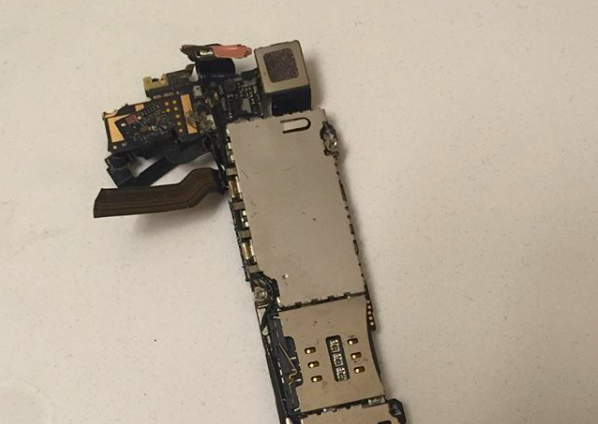Scalp Biopsies: Just a Piece of the Puzzle
Scalp Biopsies: Often Just a Piece of the Puzzle but Not the Whole Puzzle
Scalp biopsies are extremely helpful in some cases. When the right sized sample (4 mm) is taken from the correct spot and processed properly using the correct technique and interpreted by a dermatopathologist who understands scalp hair & scalp pathology.... a scalp biopsy can be an amazing help.
As an analogy, take a look at the photo. I see some kind of metal object about 5 in x 2 in. It’s hard to tell what it is because it’s not representative enough of the original object. I am not so skilled in identifying electronics to know what it was when I first saw this object. I knew it was not a watch and not a toaster oven. I did not look like the insides of all the watches (or toaster ovens) that I had seen in my life.
I highly skilled electronics expert might correctly identify this as the inside of an iPhone. There are some specific design features that give clues that this is an apple iPhone and nothing else. A true iPhone expert might identify this not only as an iphone but as an iPhone5.
Biopsies of the scalp are just samples of the scalp. A good sized sample taken from the right area increases the odds that the sample will have the necessary features to make the right diagnosis. But you need an experienced pathologist too.
A good electronics technician would not just say this piece of metal is from a smartphone, they would say it’s from an iphone. A good pathologist does not just identify the patient has a scarring alopecia but helps pinpoint that the features are more consistent with lupus than lichen planopilaris.
A biopsy is not as helpful when the principles of taking and interpreting the biopsy are not followed. A really good sample given to a less experienced pathologist can sometimes still give the right diagnosis (and usually does) and an inadequate sample given to a brilliant pathologist can also sometimes give the right diagnosis (and usually does). But really tough cases need good samples (sometimes 2 or 3), taken from carefully chosen areas and placed on the microscope stage of a pathologist who thoroughly understands hair and scalp pathology.
This article was written by Dr. Jeff Donovan, a Canadian and US board certified dermatologist specializing exclusively in hair loss.

